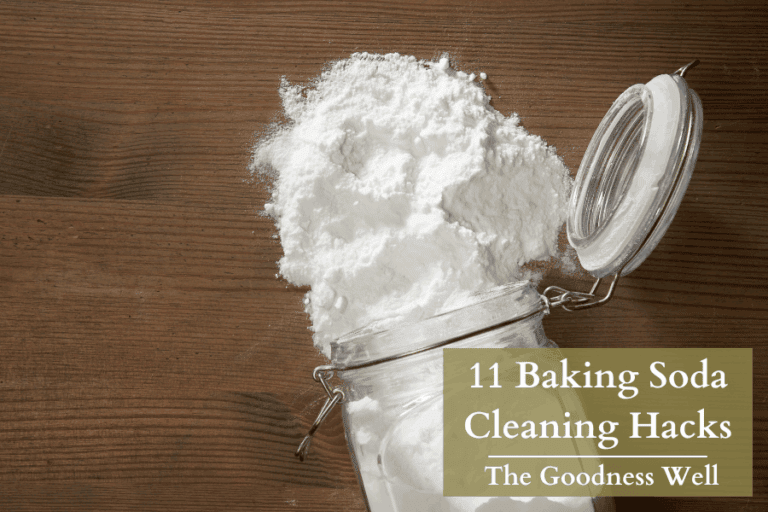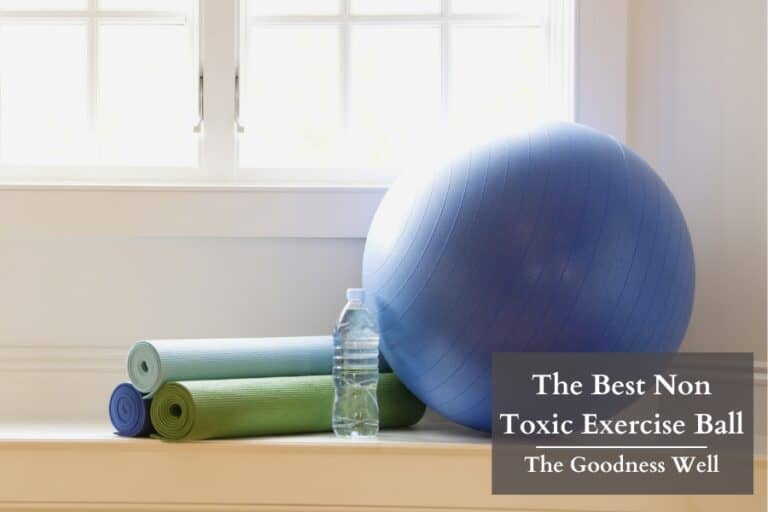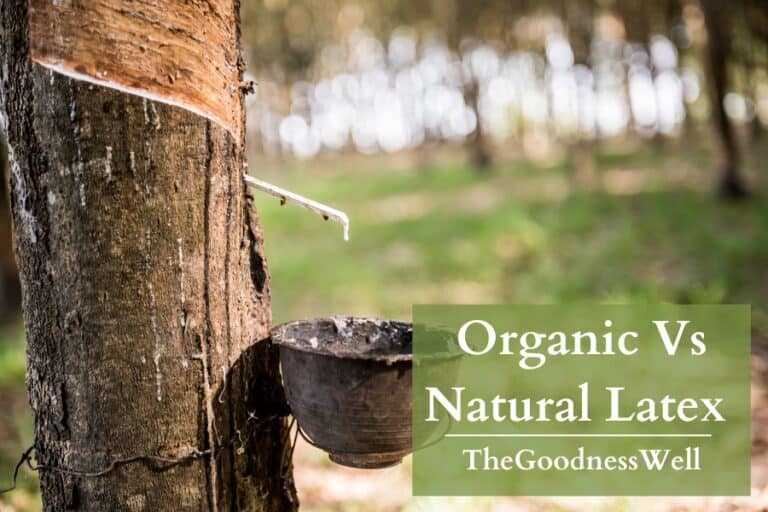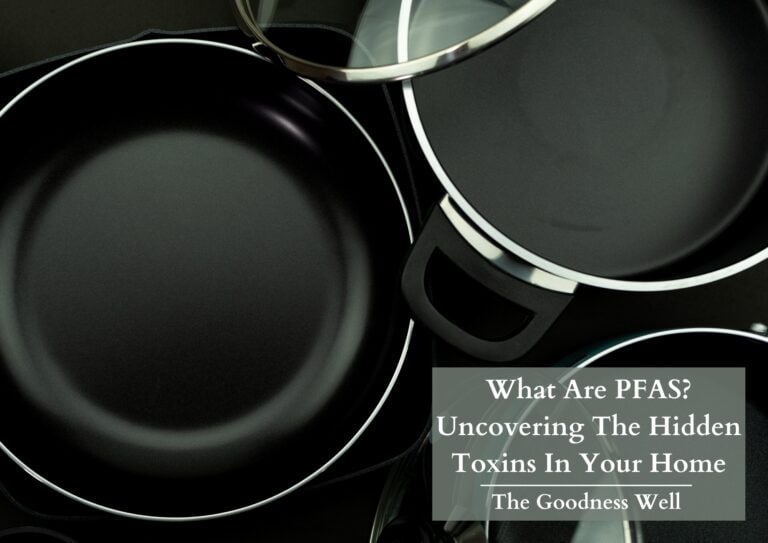What Is Natural Wood And How Can You Tell The Difference?
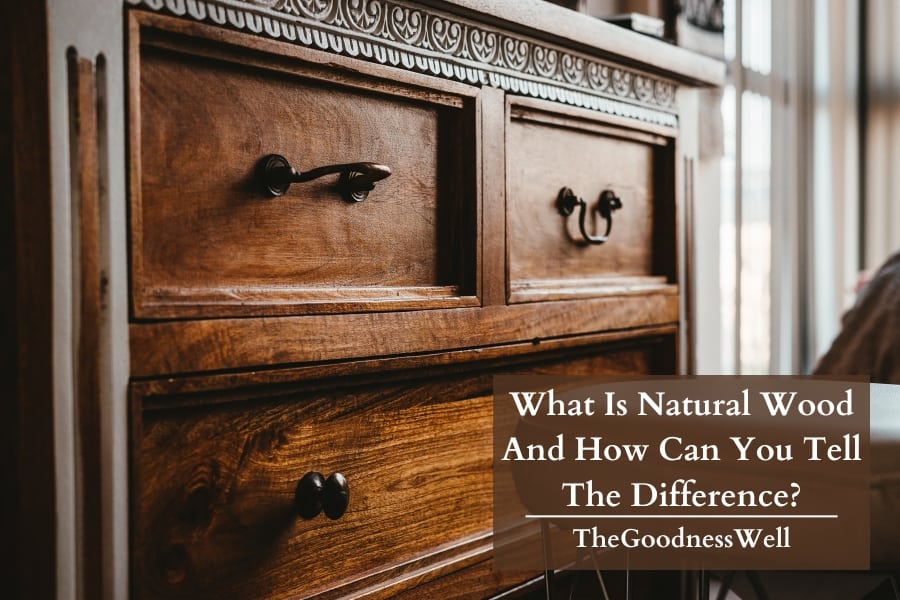
You probably see the term everywhere when trying to shop for non-toxic furniture but what does “natural wood” even mean?
We’ll tell you exactly what it means but also give you some tips to be sure the furniture you’re buying is indeed actually made from real wood, as the term “natural” is so widely used and abused it’s hard to know what’s what nowadays.
This way you’ll be more than prepared the next time you’re in the market for wooden furniture like a wooden dresser or desk.
TL;DR
What is Natural Wood?
Natural wood (also known as organic or solid wood) as a building material refers to lumber that hasn’t been treated with chemicals, mixed with other substances, or had any toxic resins or glues added to it. It’s the most non-toxic form of wood as it’s usually sourced sustainably and is free of the harmful, formaldehyde-filled glues that engineered woods like particle board, plywood, and MDF contain. To ensure your wood is indeed “natural” look for furniture described as “solid wood” and that is FSC (Forest Stewardship Council) certified.
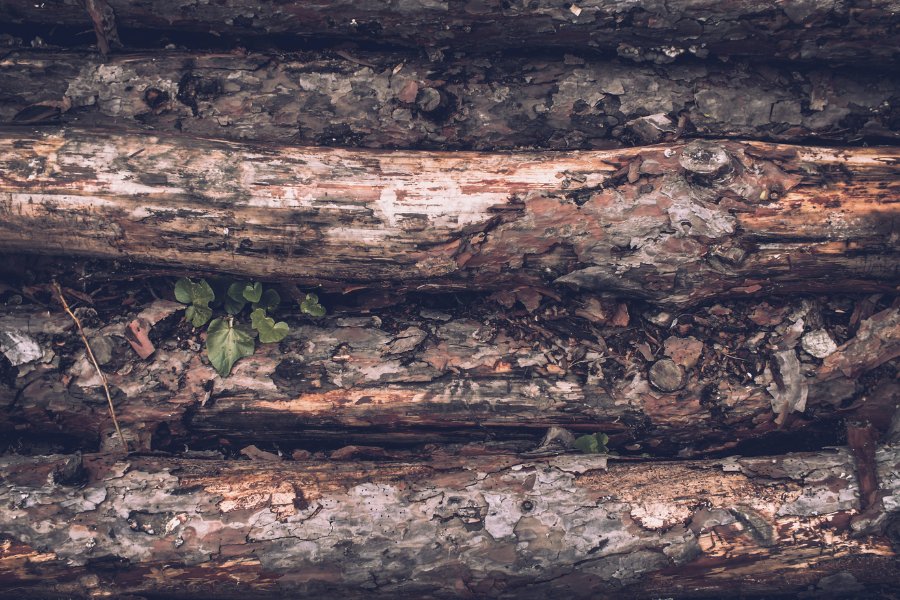
What Is Natural Wood?
Natural wood is wood taken straight from trees like oak or pine without extra processing, chemicals, or treatments.
Some people might also refer to it as “solid wood” or “organic wood“.
For anyone, it’s the most preferred form of wood for furniture or other building materials as it’s strong, lasts long, and is eco-friendly.
Unlike engineered wood, which is made by gluing wood pieces together, natural, solid wood is made without any toxic treatments and chemicals.
As you might have guessed, engineered wood is much cheaper than solid wood, a reason many manufacturers use it.
Examples
When you think of natural wood, think of wood cut straight from trees like:
- Oak
- Pine
- Birch
- Walnut
This isn’t a full list, though—there are more types of wood than there are flavors at your local ice cream shop!
From coconut wood to oakwood, these solid woods can be used to make all types of authentic wood products. From furniture to things like the coconut bowls we have at home!
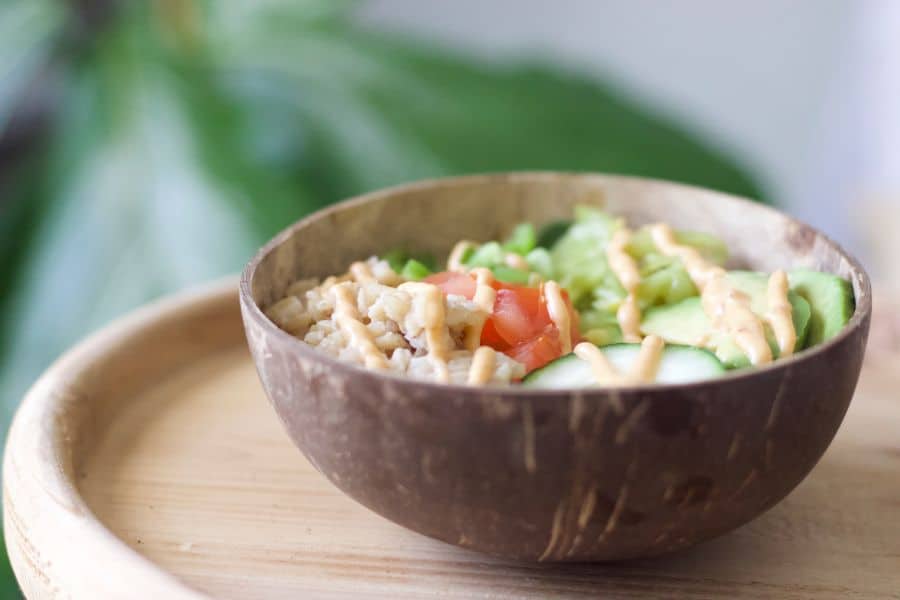
Engineered Wood: The Frankenstein of Lumber
Moving on to engineered wood—it’s like the smoothie of the wood world.
…But not a good smoothie…
Manufacturers mix wood products (like fibers, chips, or veneers) with adhesives and press them into new shapes.
The problem is, that almost all types of adhesives are toxic and can off-gas formaldehyde and harmful VOCs (Volatile Organic Compounds), that are unsafe for humans.
In fact, wood glue/adhesives have been linked to health issues including respiratory disease and cancer.
What Types of Wood Adhesives Have Formaldehyde?
- Most commonly used resins in particle board production.
- Emits high levels of formaldehyde
- Less common in particle board than in plywood
- A slower release of formaldehyde
- Lower emissions than UF-bound products
- Used for laminated surfaces
- More water-resistant than UF
- Emit formaldehyde but can have a lower emission rate than UF resins
- These adhesives, such as polymeric methylene diisocyanate (pMDI) and soy-based adhesives, don’t release formaldehyde.
- Can be labeled as “formaldehyde-free.”
- Should have a third-party certification to prove this!
- Formulated to have reduced formaldehyde levels
- Again, it should have a third-party certification to prove this claim
Examples of engineered wood include plywood, MDF (medium-density fiberboard), and particleboard.
So yes, these materials can be sturdy and cost-effective, but they aren’t eco-friendly and can even be unsafe.
What It Should and Shouldn’t Include
Real natural wood is 100% organic, with no additives, and no preservatives.
As well as, free from harmful chemicals and synthetic materials.
In short, the less it’s tampered with, the better.
- Solid Wood Composition: It will be composed entirely of solid wood.
- Natural Grain and Color: Will have the natural grain patterns and color for the unique tree type.
- Sustainability Certifications: Certifications like FSC or PEFC, show it’s been sourced responsibly.
- Chemical Additives: Avoid synthetic fillers, adhesives, or chemical treatments that can off-gas or cause harm.
- Artificial Coloring: Should not be coated with artificial layers that just mask the wood’s natural beauty.
- Unsustainable Origins: Should not come from overharvested or endangered forests.
- Ecological Harm: The harvesting process should not cause habitat destruction or biodiversity loss.
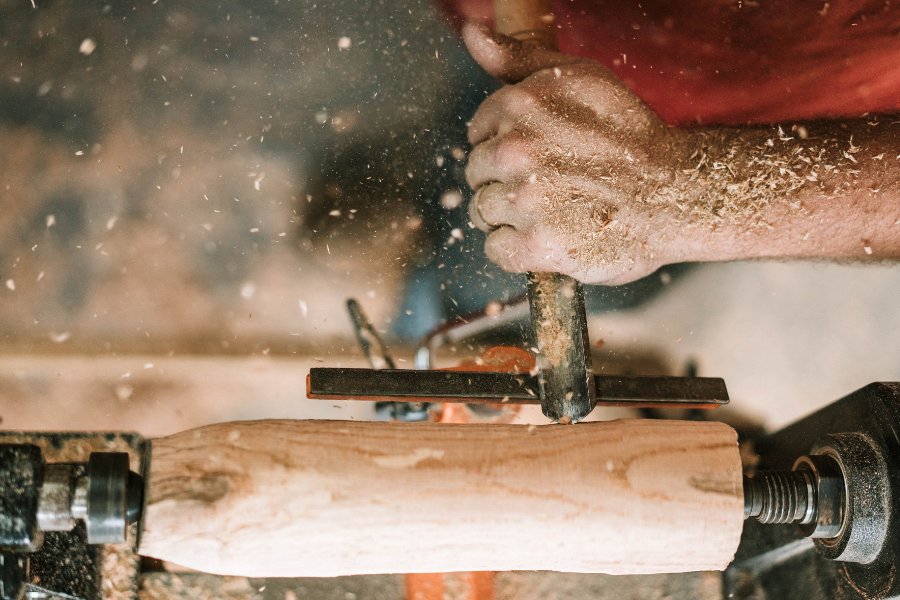
Spotting Real Solid Wood: Certifications and Tips
With greenwashing and other tactics to trick consumers into buying a product thinking it’s eco-friendly when in reality it’s not, it’s important to know how to identify natural wood.
When in doubt…
Look for certifications!
Here are a few certifications and labels to look for:
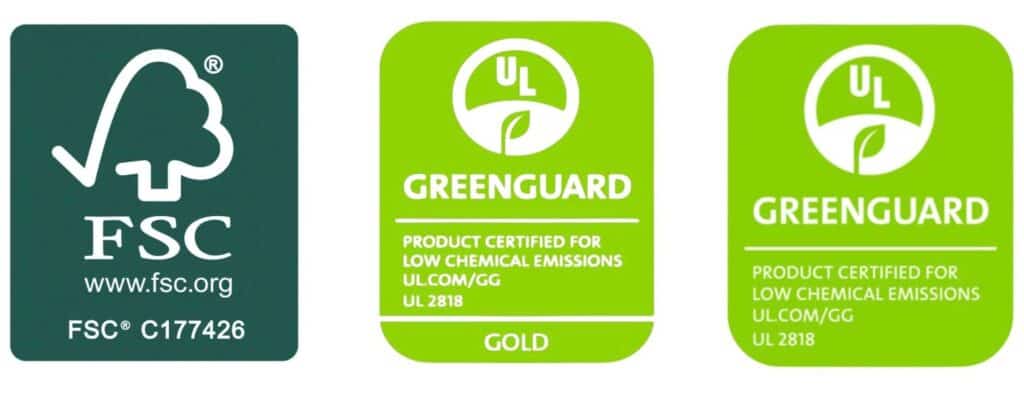
- FSC certification: Proves the wood is sourced sustainably and responsibly. This does not ensure the product isn’t made from engineered wood, as engineered wood can also be FSC certified.
- UL Greenguard certification: Not a wood certification but often accompanies sustainably sourced solid wood and ensures products, particularly furniture, emit very low chemical emissions.
- Solid Wood: Companies will refer to their product as either made of “solid wood”, “organic wood” or “natural wood”.
- Transparency: If a company throws the word “natural wood” in their product description without any extra information or certifications as to how it is “natural” or where it is sourced from, they might be greenwashing.
Here is a great example of a company that sells the real deal.
Example of authentic natural furniture:
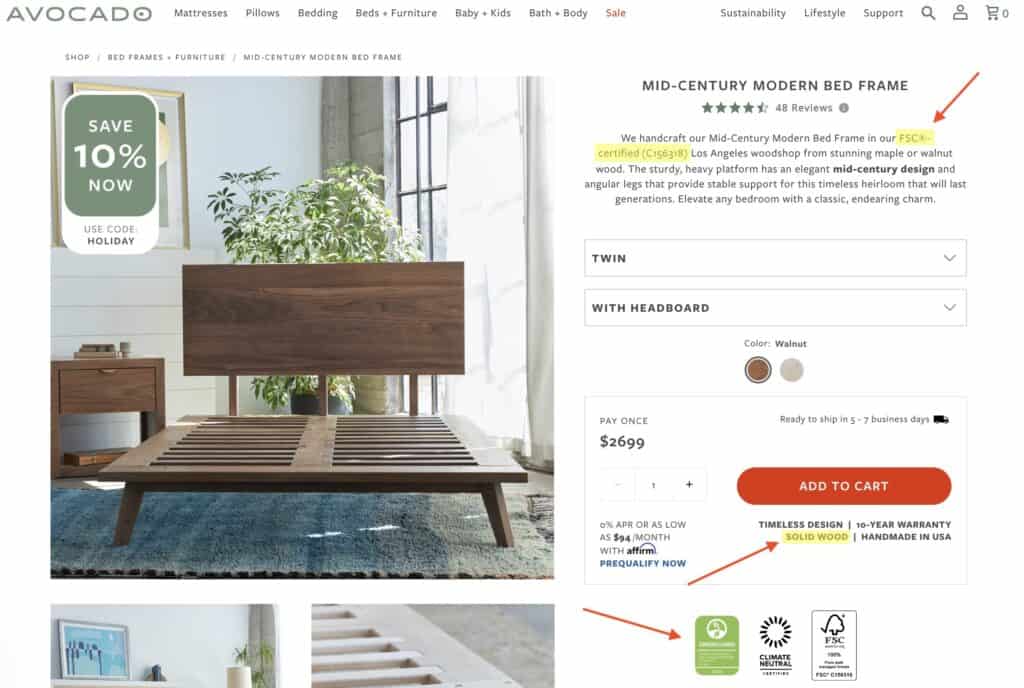
See how they prove their piece of furniture is natural?
They state that it is FSC certified, made of solid wood, and most importantly they back up their claims with certifications down at the bottom.
That’s the real deal folks!
Why Natural Wood Is Just Better
There’s something about real wood furniture that screams authenticity.
When working at home I sit at my dark walnut desk that I absolutely adore. Not only does it not emit a nasty chemical smell, but it also just gives my workspace a little more warmth and peace.
Just remember, when in doubt, go natural—it’s the wood that could, can, and will be the best eco-friendly choice for your home.

